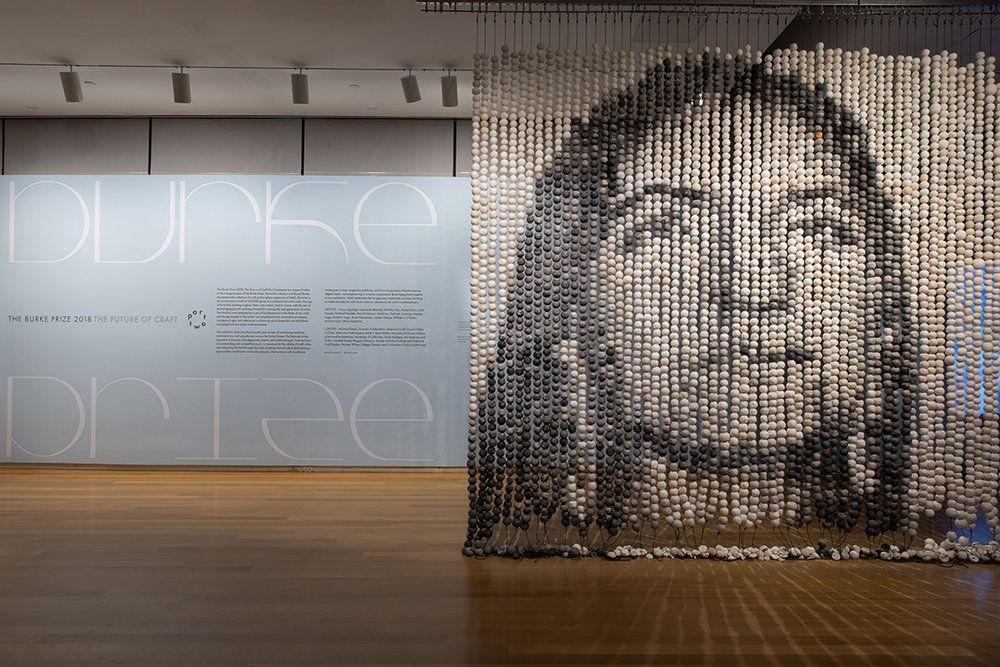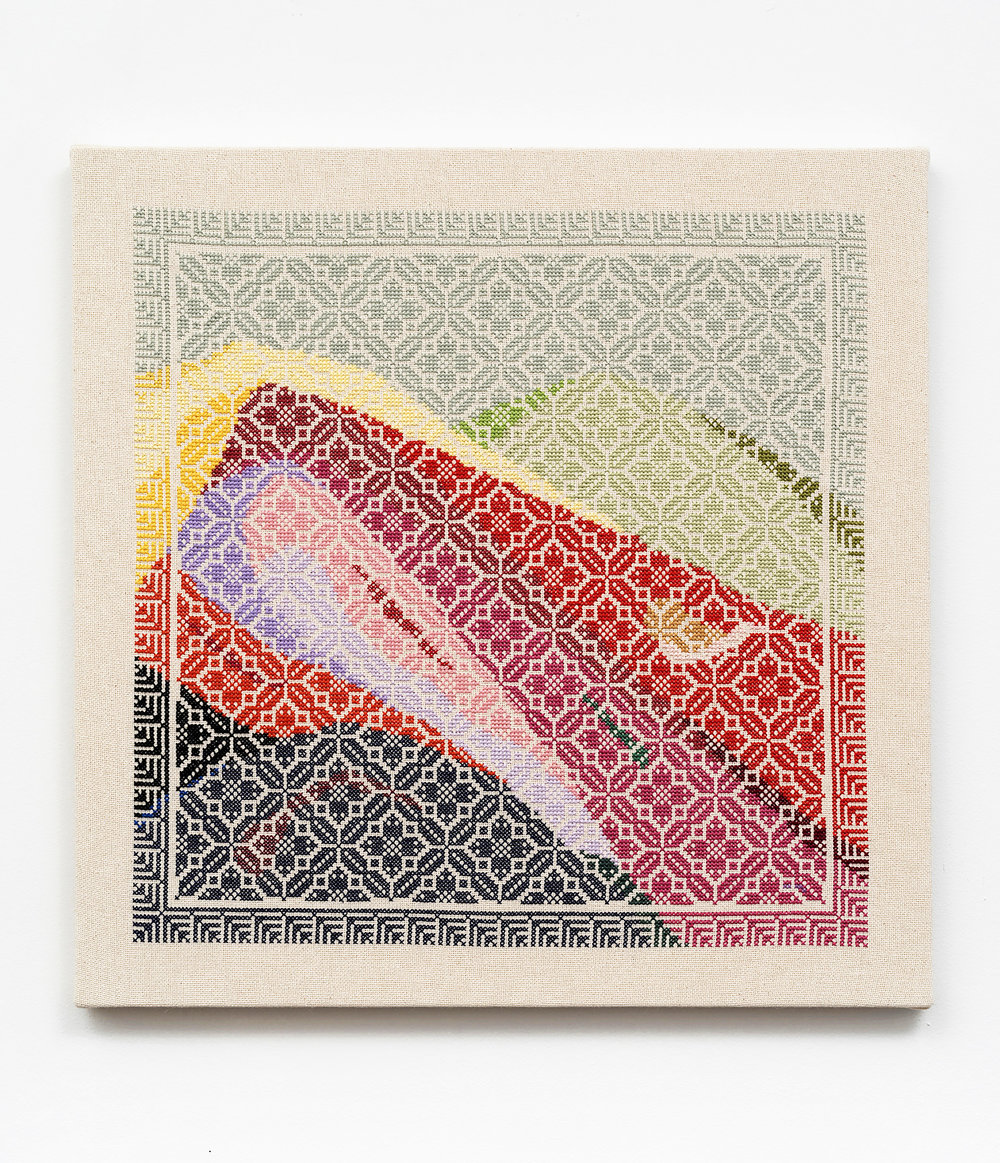A Look into the Handmade Future
April 22, 2019
by Jessica Crocker, Cohort ’18

In 2018, The Museum of Art and Design instituted a new award honoring Craft. The Burke Prize: Future of Craft celebrates a younger generation of early-career makers working in working in glass, fiber, clay, metals, or wood. The winner of the prize received an unrestricted award of $50,000. In February 2019, I had the pleasure of attending “Contemporary Craft: Resistance and Protest,” a panel discussion between Burke Prize winner Cannupa Hanska Luger, finalist Jordan Nassar, and moderator Marianna Schaffer of Creative Capital. Intended speaker Roberto Lugo was unfortunately absent. Luger is a Native contemporary artist working in a variety of materials including but not limited to clay, video, fiber, and installation. Chosen for its use of craft to engage the community, Luger’s work creates a sense of unity in a world overwhelmed with conflict. His piece Every One (2018) is a social collaboration consisting of over four thousand handmade ceramic beads gathered from hundreds of communities. According to the artist, the final installation, “references the data [over 4000] of missing and murdered Indigenous women, girls, queer, and trans community members in Canada.”

Jordan Nassar. Scatter them in Forest and Meadow , 2018. Image Source .Jordan Nassar. Scatter them in Forest and Meadow, 2018. Image Source.Fellow panelist and artist, Jordan Nassar, uses traditional Palestinian hand embroidery techniques to examine the conflicting issues of identity and culture he faces with respect to his own heritage. His work is a collaboration between the hardworking women of that area and himself. These two artists created a compelling and inspiring discourse about the potential craft as a device for protest in a divisive world.
This prestigious new award in the field of craft is a telling sign of the new maker’s world and the embrace of tradition and innovation. Craft gives us this opportunity to work physically and conceptually together through the history of material and process. In light of the many craft programs slowly disappearing throughout the country, it is with a certain satisfaction that this public affirmation has come to fruition. Craft has a place in the canon of aesthetics and voice equal to contemporary art.
While this welcome spotlight in craft bodes well for future appreciation, it is not without note that many of the pieces celebrated could be seen in the light of sculpture and painting. There was a lack of functional work in the show save for a few items, yet it would still be difficult to say if these objects were meant for actual use. It calls to mind the very real question: what is contemporary craft? For craft, it seems the move away from traditional use-value such as function is becoming a hallmark for the title ‘contemporary’. I take issue with this to some regard and the exhibition left me conflicted between the uplifting, exciting role contemporary craft may have and the frustration that craft is denying its own identity to achieve it. The tradition of making is one of material, process, function, and the specific form of learning that takes ‘time.’ It is a shame to begin dissolving these values in order to gain the white pedestal. I worry that by destroying the heritage of making through negation, we might be doing something dangerously wrong. There is a list of endangered crafts that is growing annually. We must ask the question, “what does it mean when the last person with a skill to make is gone?” Is our reliance on manufactured goods the cause? I cannot help but question the role that art has played by diminishing those aspects of craft that make it what it is.
